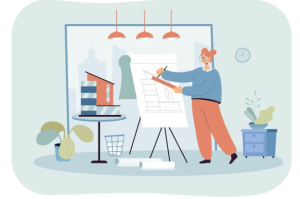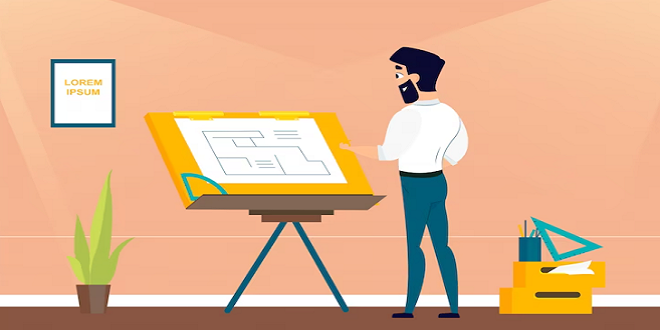Interior design is a fascinating field that involves creating functional, aesthetic, and visually appealing spaces within buildings. One of the essential aspects of interior design is understanding materials and finishes. The choice of materials and finishes greatly impacts the overall look, feel, and functionality of an interior space. In this article, we will delve into the world of materials and finishes for interior design, exploring their importance, types, and considerations to keep in mind when designing spaces.
Importance of Materials and Finishes in Interior Design
Materials and finishes play a crucial role in interior design as they contribute to the aesthetics, durability, functionality, and overall ambiance of a space. The right choice of materials and finishes can elevate the visual appeal and functionality of a space, while the wrong choice can result in a space that looks unappealing, lacks durability, and fails to meet the functional requirements.
Materials and finishes are used in various aspects of interior design, including walls, floors, ceilings, furniture, fixtures, lighting, and accessories. They can be natural or man-made, and their properties, such as color, texture, pattern, and durability, can greatly impact the visual and functional aspects of a space.
Types of Materials and Finishes for Interior Design
There is a wide array of materials and finishes available in the market, each with its unique properties, advantages, and limitations. Here are some common types of materials and finishes used in interior design:
Wood: Wood is a timeless and versatile material used in interior design for various purposes, such as flooring, furniture, cabinetry, and wall paneling. It offers warmth, natural beauty, and durability to a space. Wood comes in different types, colors, and textures, providing a wide range of options to choose from to suit different design styles and aesthetics.
Metal: Metal is a durable and sleek material used in interior design for a modern and industrial look. It can be used in various forms, such as stainless steel, brass, aluminum, and iron, and can be incorporated into furniture, lighting fixtures, hardware, and decorative accessories.
Stone: Stone is a natural and elegant material used in interior design for its durability and aesthetic appeal. It can be used for flooring, countertops, walls, and backsplashes. Stones like marble, granite, and travertine are popular choices for their unique patterns, textures, and colors.
Glass: Glass is a versatile material that can be used in interior design for its transparency, light-reflective properties, and modern aesthetic. It can be used in windows, doors, partitions, mirrors, and decorative accessories, adding a sense of openness, brightness, and sophistication to a space.
Textiles: Textiles are soft materials used in interior design for their visual and tactile appeal. They can be used for upholstery, curtains, drapes, rugs, and cushions, adding warmth, comfort, and style to a space. Textiles come in a wide range of colors, patterns, and textures, allowing for endless design possibilities.
Considerations for Choosing Materials and Finishes
When selecting materials and finishes for interior design, there are several factors to consider to ensure that they meet the functional, aesthetic, and budget requirements of a project. Here are some considerations to keep in mind:
Functionality: Consider the intended use of the space and choose materials and finishes that are appropriate for the purpose. For example, high-traffic areas may require durable and easy-to-clean materials, while moisture-prone areas may require waterproof materials.
Aesthetics: Consider the design style and overall aesthetic of the space. Choose materials and finishes that complement the design concept and create the desired ambiance. Consider factors such as color, texture, pattern, and scale to achieve the desired visual impact.
Durability: Consider the lifespan of the materials and finishes. Opt for materials and finishes that are durable and can withstand regular wear and tear, ensuring that they will last for a long time without losing their aesthetic appeal.
Maintenance: Consider the maintenance requirements of the materials and finishes. Some materials may require regular cleaning, polishing, or sealing, while others may be low-maintenance. Choose materials and finishes that are easy to clean and maintain, taking into account the long-term upkeep of the space.
Budget: Consider the budget constraints of the project. Different materials and finishes come with varying price ranges, so it’s essential to choose options that fit within the allocated budget. It’s important to strike a balance between aesthetics, functionality, and budget to ensure a successful interior design project.
Interior Design Courses Online: Learning About Materials and Finishes

Aspiring interior designers or those interested in learning more about materials and finishes for interior design can benefit from online courses. Interior design course online provides a flexible and convenient way to gain knowledge and skills in interior design for beginners, including understanding materials and finishes. Many reputable educational institutions and design schools offer online courses that cover various aspects of interior design, including materials and finishes selection, application, and maintenance.
Conclusion
Understanding materials and finishes is a crucial aspect of interior design. The right selection and application of materials and finishes can greatly impact the aesthetics, functionality, durability, maintenance, and sustainability of interior spaces. Aspiring interior designers or beginners in the field can benefit from online interior design courses that provide comprehensive education on materials and finishes, along with other essential aspects of interior design.
Online courses offer flexibility, convenience, and opportunities for interactive learning, allowing learners to gain expertise in materials and finishes at their own pace. With a solid understanding of materials and finishes, aspiring interior designers can explore various career opportunities in the field, including residential, commercial, healthcare, hospitality, and retail sectors.
 Isaiminia World Breaking News & Top Stories
Isaiminia World Breaking News & Top Stories




